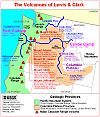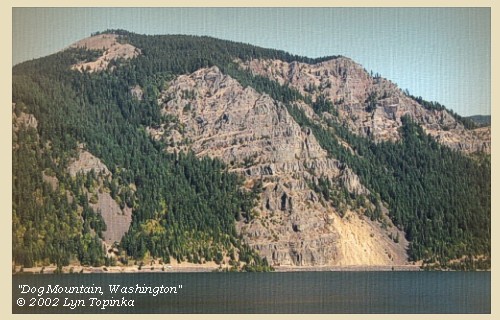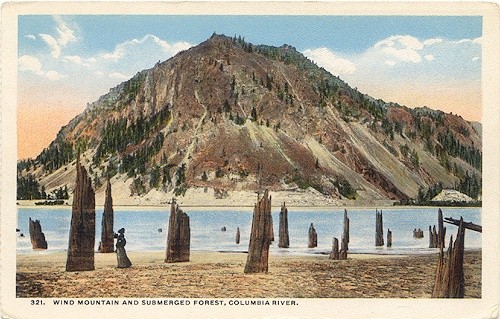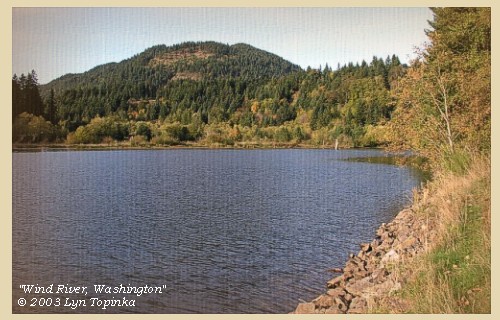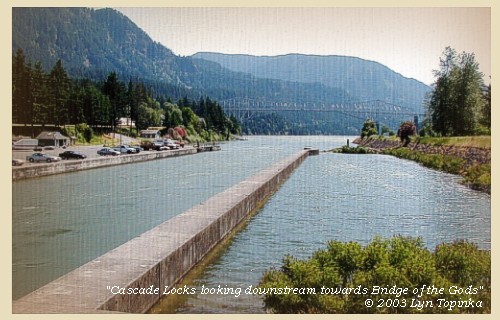The Volcanoes of
Lewis and Clark
Lewis and Clark
|
October 30, 1805 "Lower Falls of the Columbia" - Dog Mountain to Cascade Locks |
|
Home
The Volcanoes of Lewis and Clark Map of the Journey Volcanoes, Basalt Plateaus, Major Rivers, etc. The Volcanoes Mount Adams, Mount Hood, Mount Jefferson, Mount Rainier, and Mount St. Helens CALENDAR of the Journey October 1805 to June 1806 Along the Journey Pacific Northwest Maps - Columbia River, Volcanoes, Flood Basalts, Missoula Floods, Geology, etc. The Corps of Discovery The Journey of Lewis and Clark About the Reference Materials The Journals, Biddle/Allen, DeVoto, Gass, Moulton, Topo Maps, and others USGS Lewis and Clark Links Links to USGS Websites highlighting the Lewis and Clark Journey Resources Publications Referenced and Websites Visited |
PREVIOUS
October 29 Entering the Columbia River Gorge, The Dalles to the Little White Salmon |
October 30
"Lower Falls of the Columbia", Dog Mountain to Cascade Locks Dog Mountain Landslide, Four Cascades, Submerged Forest, Wind River, Stevenson (Washington), "Lower Falls of the Columbia" and Cascade Locks |
CONTINUE
October 31 "Lower Falls of the Columbia", Cascade Locks - Preparing to Portage |
|
To the Pacific - October 1805
"Lower Falls of the Columbia" - Dog Mountain to Cascade Locks |
| Lewis and Clark camped on the Washington side of the Columbia, upstream of the Little White Salmon River, at a village near a "Pond". Today the Washington town of Cook is located at the mouth of the Little White Salmon River. |
| Wednesday, October 30, 1805 |
| A moderate rain fell during all last night, but the morning was cool, and after taking a scanty breakfast of deer, we proceeded. The river is now about three quarters of a mile wide, with a current so gentle, that it does not exceed one mile and a half an hour; [passing location of Viento State Park, Oregon, on the left] but its course is obstructed by the projection of large rocks, which seemed to have fallen promiscuously from the mountains into the bed of the river. [possibly Dog Mountain Landslide] |
| "... passed Several places where the rocks projected into the river & have the appearance of haveing Seperated from the mountains and fallen promiscuisly into the river, Small nitches are formed in the banks below those projecting rocks which is comon in this part of the river, ..." [Clark, October 30, 1805] |
| On the left side four different streams of water empty themselves in cascades from the hills. |
| "... Saw 4 Cascades caused by Small Streams falling from the mountains on the Lard. Side, ..." [Clark, October 30, 1805] |
| The possiblities in this area are Starvation Creek and Falls, the seasonal Cabin Creek and Falls, Warren Creek and Falls, and Wonder Creek and Lancaster Falls. Lindsey Creek and Falls is another one half mile further west. |
| What is, however, most singular is, that there are stumps of pine trees scattered to some distance in the river, which has the appearance of being dammed below and forced to encroach on the shore: |
| "... This part of the river resembles a pond partly dreaned leaving many Stumps bare both in & out of the water, current about 1 mil pr. Hour ..." [Clark, October 30, 1805, first draft] |
| "... a remarkable circumstance in this part of the river is, the Stumps of pine trees are in maney places are at Some distance in the river, and gives every appearance of the rivers begin damed up below from Some cause which I am not at this time acquainted with, the Current of the river is also verry jentle not exceeding 1 1/2 mile pr. hour and about 3/4 of a mile in width. ..." [Clark, October 30, 1805] |
| these obstructions continue till at the distance of twelve miles, when we came to the mouth of a river on the right [Wind River], where we landed: we found it sixty yards wide [Wind River], and its banks possess two kinds of timber which we had not hitherto seen: one is a very large species of ash; the other resembling in its bark the beach; but the tree itself, as also the leaves, are smaller. We called this stream Crusatte's river [Wind River], after Crusatte, one of our men: opposite to its mouth the Columbia widens to the distance of a mile, with a large sandbar, and large stones and rocks scattered through the channel. ...... |
| "... Some rain, we landed above the mouth of a Small river on the Stard. Side and Dined. ... here the river widens to about one mile large Sand bar in the middle, a Great both in and out of the water, large Stones, or rocks are also permiscuisly Scattered about in the river ... The bottoms above the mouth of this little river (which we Call) is rich covered with grass& firn & is about 3/4 of a mile wide rich and rises gradually, below the river (which is 60 yards wide above its mouth) the Countery rises with Steep assent. we call this little river (fr Ash) New Timbered river from a Speces of Ash (that wood) which grows on its banks of a verry large and different from any we had before Seen ..." [Clark, October 30, 1805] |
| Above Crusatte's river [Wind River] the low grounds are about three quarters of a mile wide, rising gradually to the hills, and with a rich soil covered with grass, fern, and other small undergrowth; but below, the country rises with a steep ascent, and soon the mountains approach to the river with steep rugged sides, covered with a very thick growth of pine, cedar, cottonwood, and oak. The river is still strewed with large rocks. Two and a half miles below Crusatte's river [Wind River] is a large creek [Rock Creek] on the right, with a small island in the mouth. [today, the location of Stevenson, Washington] |
| Just below this creek [Rock Creek] we passed along the right side of three small islands on the right bank of the river, with a larger island on the opposite side, and landed on an island [???] very near the right shore at the head of the great shoot [The Cascade Rapids, today the location of the Cascade Locks], and opposite two smaller islands at the fall or shoot itself. |
| Lewis and Clark have arrived at "The Lower Falls of the Columbia", an area also known as the Cascade Rapids, and today the vicinity of Cascade Locks, Oregon. In 1896 the Federal Government built a series of locks around the trecherous rapids. |
| Just above the island on which we were encamped [today this island is underwater] is a small village of eight large houses in a bend on the right, where the country, from having been very mountainous, becomes low for a short distance. We had made fifteen miles to-day, during all which time we were kept constantly wet with the rain. ...... As soon as we landed, captain Lewis went with five men to the village, which is situated near the river, with ponds in the low grounds behind: the greater part of the inhabitants were absent collecting roots down the river: the few, however, who were at home, treated him very kindly, and gave him berries, nuts, and fish; and in the house were a gun and several articles which must have been procured from the whites; but not being able to procure any information, he returned to the island. Captain Clarke had in the meantime gone down to examine the shoot [The Lower Falls of the Columbia], and to discover the best route for a portage. He followed an Indian path, which, at the distance of a mile, led to a village on an elevated situation ...... After going about three miles the night obliged him to return to camp: he resumed his search in the morning. |
|
|
|
The Camp - October 30 and 31, 1805:
Lewis and Clark's camp of October 30 and 31, 1805, was on an island on the Washington side of the Columbia River, above the Cascade Locks just north of today's Bridge of the Gods. This island is now under water. On the return trip home, Lewis and Clark stayed just south of here on April 12, 1806. |
| Home | Previous | Continue |
If you have questions or comments please contact: GS-CVO-WEB@usgs.gov
June/July 2004, Lyn Topinka
The Volcanoes of Lewis and Clark Home Page | CVO Home Page

